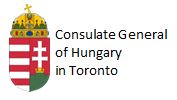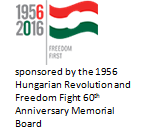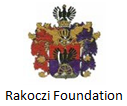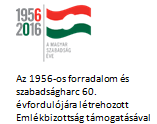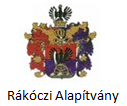Two Weeks of Freedom
The Revolution and Freedom Fight of 1956 lasted for no more than two weeks. Nevertheless, it shook the world. It wrecked the regime established by the great powers after World War II and unveiled the cruel reality of the Soviet terror that had taken over. Once and for all, the world woke up from the illusions of communism. In October 1956 the Hungarian nation proved that it was capable of taking control of its own destiny.
The desperation and anger that had been bottled up for so many years finally broke through the surface during the revolution. The spontaneous uprising grew to become a revolution, and since the prerequisite of freedom is to regain national independence, it became a freedom fight. Sixty years ago, the whole world turned its attention to Budapest. This life-and-death struggle that barely lasted two weeks made it clear to everyone that the then existing great powers gave no chance for the freedom fight of the Hungarians to succeed. Even so, the death defying courage of The Boys of Pest inflicted an incurable wound upon communism and shook the Soviet empire.
Hungarian refugees in Canada
November 28, 1956:
Jack W. Pickersgill, Minister of Citizenship and Immigration, addressed Parliament declaring a new immigration policy for Hungarian refugees:
– Pickersgill announced free passage for Hungarian refugees. This was unprecedented in Canada’s history.
– The Minister gave instructions to his staff that all Hungarian refugees were to be accepted who wanted to come to Canada.
– The normally required medical exams and chest X-rays were waived.
Within 48 hours of making the free passage announcement in parliament, Pickersgill was on this way to Vienna to implement Canada’s new policy.
“On my arrival in Vienna, I realized the Immigration office was hopelessly inadequate. No time was lost in securing larger quarters where the officials had room to deal quickly with applicants. The Austrian Minister of the Interior, at my request, had a camp made available exclusively for refugees who wanted to come to Canada, and we were able to send Hungarian-speaking Canadians to the camp to brief them.”
J.W. Pickersgill (Minister of Immigration)
http://www.1956memorial.com/exhibition.php?exhibition=0&slide=8#start
Communities across Canada have been enhanced and enriched in many fields by the men, women and children who fled Hungary in 1956. See a compilation of these individuals at the following link:
http://www.1956memorial.com/exhibition.php?exhibition=0&slide=16#start
Olympic Champion – Valeria Gyenge
“…In 1952, the teenager had stunned herself and the world by capturing the gold medal in the 400-metre freestyle at the Helsinki Olympics. In all, a third of the 150 Hungarian athletes in Melbourne would defect as news reached them that, back in Budapest, Soviet tanks had left thousands dead and streets in ruin to crush the uprising….”
“…She wouldn’t see her parents again for eight years. “I was so homesick, it hurt.” When Judy, her first daughter, was born, new roots started to grow. “I built a life up from a suitcase.” Garay worked as a photographer, kept swimming, coached for a while, travelled to Europe, Africa and Latin America, and published two novels and a book of photography.
And Hungary never forgot her. On the street in Budapest, people still approach her. Last year, the Hungarian government gave her its highest award for her achievements in sport, literature and photography. The white enamel cross sparkles in its case next to the 1952 medal, which sits with a plastic button that says: “I used to be famous.”
Books
Driven to succeed
How Frank Hasenfratz grew Linamar from Guelph to Glory, by Rod McQueen and Susan M. Papp (Published by www.dundurn.com)
“Roadblocks and ordinary plates, painted green and placed in a line across roads to mimic landmines, greeted the columns of tanks at crucial traffic chokepoints. Heavy gunfire and Molotov cocktails thrown from the apartments above made the tanks ineffective for the fierce urban warfare that ensued. On October 24 alone, more than twenty Soviet soldiers were killed in the fighting.”
“Was I surprised by the uprising? Of course, I was surprised. I got caught up in it. I was glad to see it and thought, let’s move with it. Did I think they were going to win? Not really, but I was willing to sacrifice for it. I had seen injustices for so long. I liked it. I enjoyed it. I don’t know, maybe I’m a masochist. I realized whatever was going to happen, we were probably going to die.”
FREEDOM ’56 True stories of the Hungarian Revolution
by Scarlett Deva Antaloczy
(Published by BookSurge, 2010)
Freedom ‘56 is a timely compilation of true accounts of the Hungarian freedom fight of 1956 and its aftermath. What started out as a personal family tribute to Scarlett’s parents blossomed into a worldwide journey leading to a host of discoveries and the posing of serious questions about civilization, global domination and political agendas. FREEDOM ’56 is derived from a wealth of interviews and submissions of first-hand information from survivors and friends of the Hungarian Revolution of 1956 against the Soviet occupation and the Hungarian Communist party. These are the personal experiences and reflections of individual contributors, from all walks of life and from all over the world, who looked back across more than fifty years of history to share their still-vivid memories of the Revolution with readers of FREEDOM ’56. Its contribution is to give us and future generations a better understanding of what really happened and how a small nation with strong convictions helped spark the demise of a big oppressive political paradigm that we are indeed fortunate today to be free of. Scarlett’s book is an un-biased, honest and historically accurate representation of the Hungarian Revolution and the revolutionaries’ quest for freedom.
The 1956 Hungarian Revolution: Hungarian and Canadian Perspectives
edited by Christopher Adam, Tibor Egervári, Leslie Laczkó & Judy Young (Published by University of Ottawa Press, 2010)
„In October 1956, a spontaneous uprising took Hungarian Communist authorities by surprise. In a matter of days, a new regime, led by reformist Communist leader Imre Nagy, was put in place. The government immediately manifested its intention to install a democratic, multi-party republic, to withdraw Hungary from the Warsaw pact, and to liberalize the economic system of the country, all the while maintaining its socialist orientation. This prompted Soviet authorities to invade the country. After a few days of violent fighting, the revolt was crushed. In the wake of the event some 200,000 refugees left Hungary and over 38,000 of those made their way to Canada. This would be the first time Canada would accept so many refugees of a single origin, setting a precedent for later refugee initiatives.”
https://books.google.ca/books?id=K33FTgZjPFIC&printsec=frontcover#v=onepage&q&f=false

 English
English Magyar
Magyar